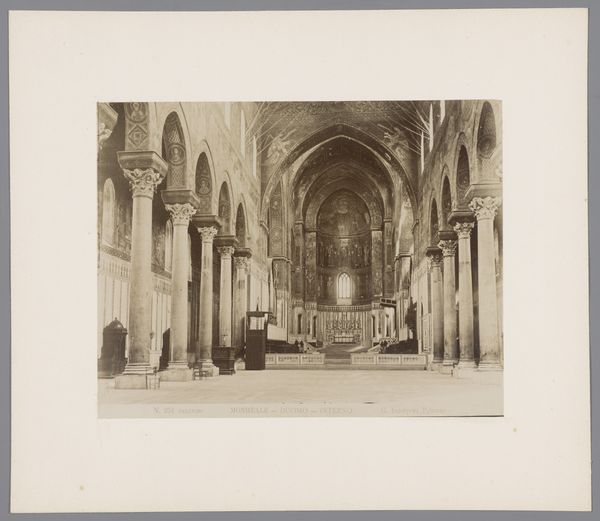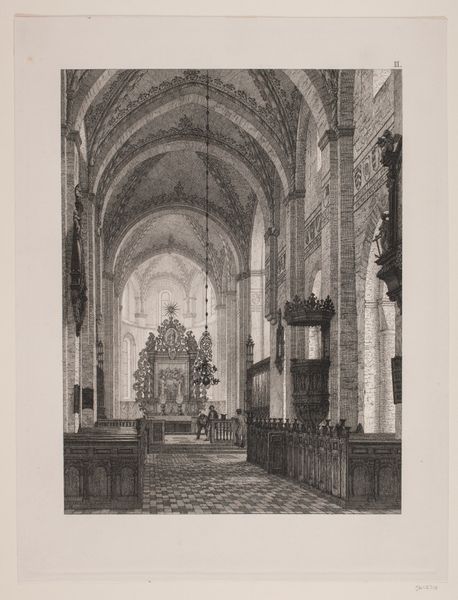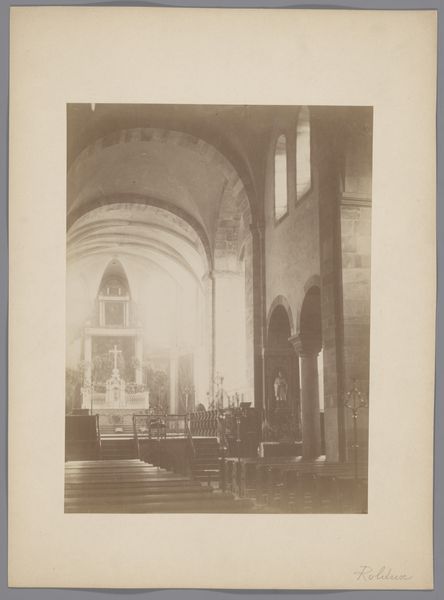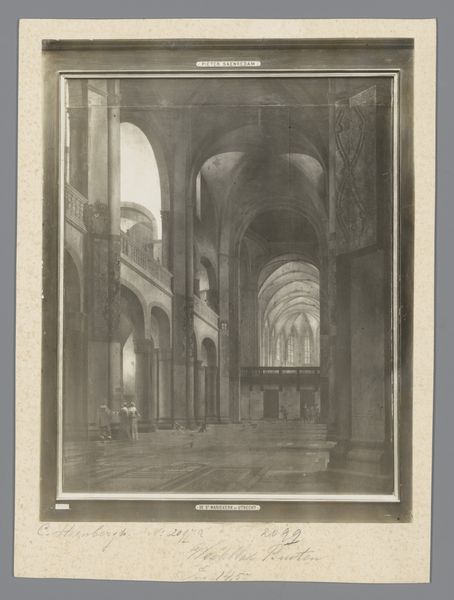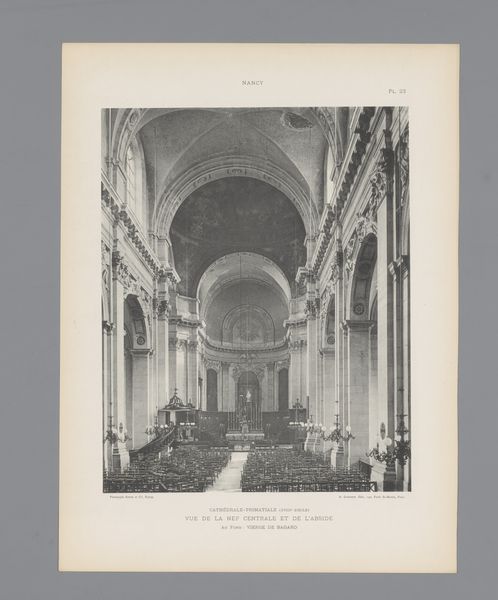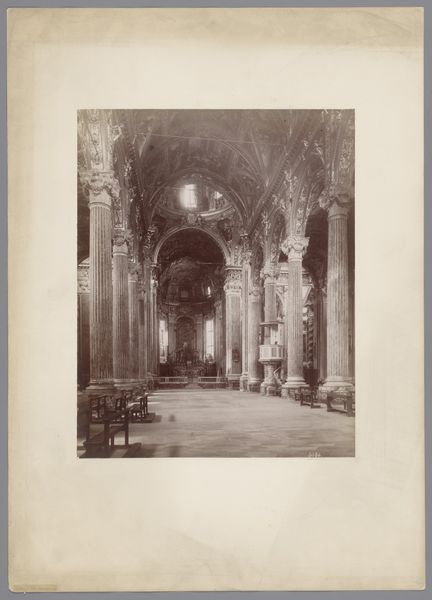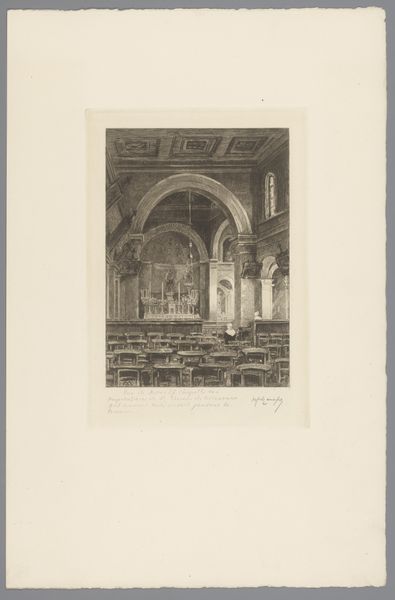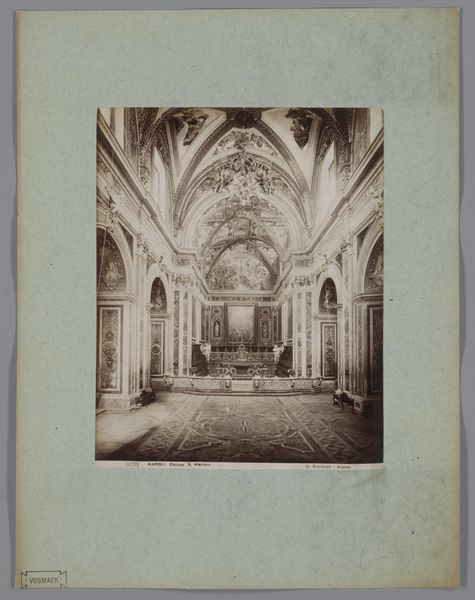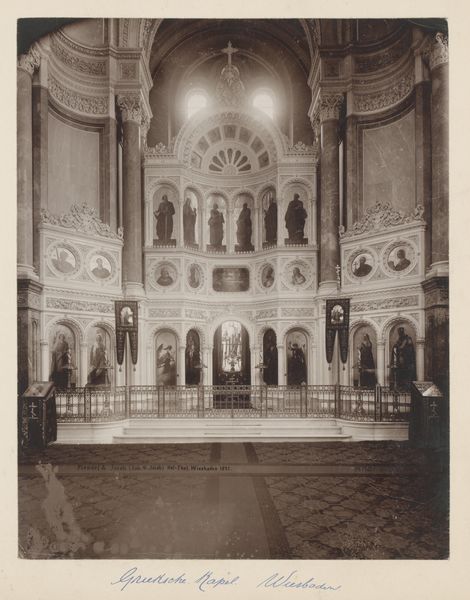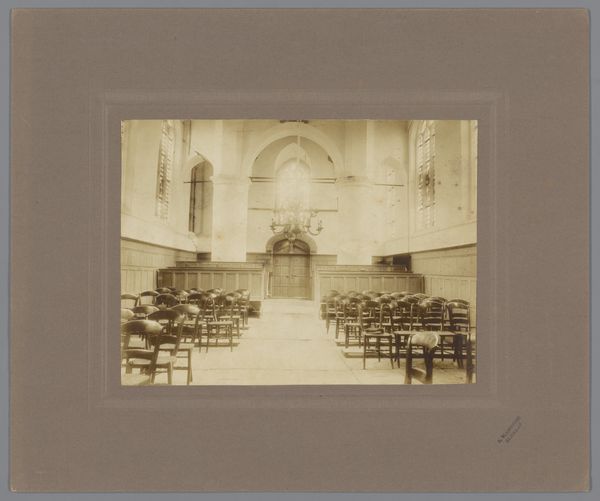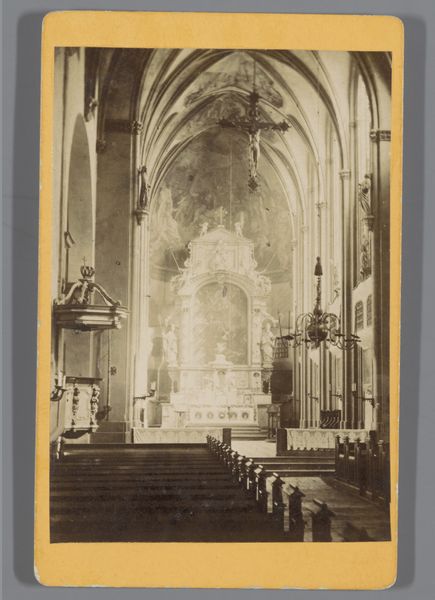
print, photography
# print
#
landscape
#
perspective
#
photography
#
italian-renaissance
Dimensions: height 253 mm, width 188 mm, height 383 mm, width 308 mm
Copyright: Rijks Museum: Open Domain
Curator: Let’s take a closer look at "Interieur van de kathedraal van Palermo, Italië," a photograph by Roberto Rive, likely taken between 1860 and 1889. It’s part of the Rijksmuseum's collection. What's your first impression? Editor: Monumental silence, I think. The soaring architecture dwarfs everything. There's something almost otherworldly about the way the light filters through, as though eternity itself is being photographed here. It’s vast, isn’t it? Almost overwhelming. Curator: Indeed. Rive’s technical skill captures the sheer scale of the cathedral beautifully. This was a time when photography was still establishing itself as an art form, and Rive demonstrates how it could document not just reality, but also evoke powerful emotions, in this case, a sense of the sublime tied up to political or even religious views. Editor: Absolutely. And consider the choice to shoot it in black and white. The stark contrast accentuates the play of light and shadow, but what impact might it have had on contemporary viewers, and how is that impact sustained today? Curator: The black and white choice was of course a necessity considering that it's antique photography. The absence of colour adds to the timelessness, as if this scene transcends specific moments in time and is there forever, inviting viewers from all eras. However, beyond aesthetics, Rive was likely hoping that photographs like these would further legitimise photographic representation. These prints were collected, and appreciated much as etchings. They circulated the aesthetic ideas embodied by Italian Renaissance buildings, carrying political valence as the architectural style circulated European political culture. Editor: So it's not just the physical space being documented, but an ideology made manifest in stone. Photography then becomes a tool to transmit that ideology. Thinking about it now, the perspective leads the eye inexorably toward that back wall where a saint or perhaps even Christ gazes down. How conscious of this symbolism, these associations of meaning might Rive have been do you imagine? It seems to have great deliberation in capturing and then presenting this scene. Curator: The strategic use of light, combined with the positioning of the photograph at that specific angle and the use of Renaissance architectural codes is hard to miss. So the photograph operates as documentation of Palermo, propaganda that furthers institutional or political goals and an artistic act in itself. Editor: I’m still caught by how much drama resides in what is essentially a still image. Well, I for one am persuaded! Curator: And a fitting observation, capturing its visual depth and historical richness!
Comments
No comments
Be the first to comment and join the conversation on the ultimate creative platform.
